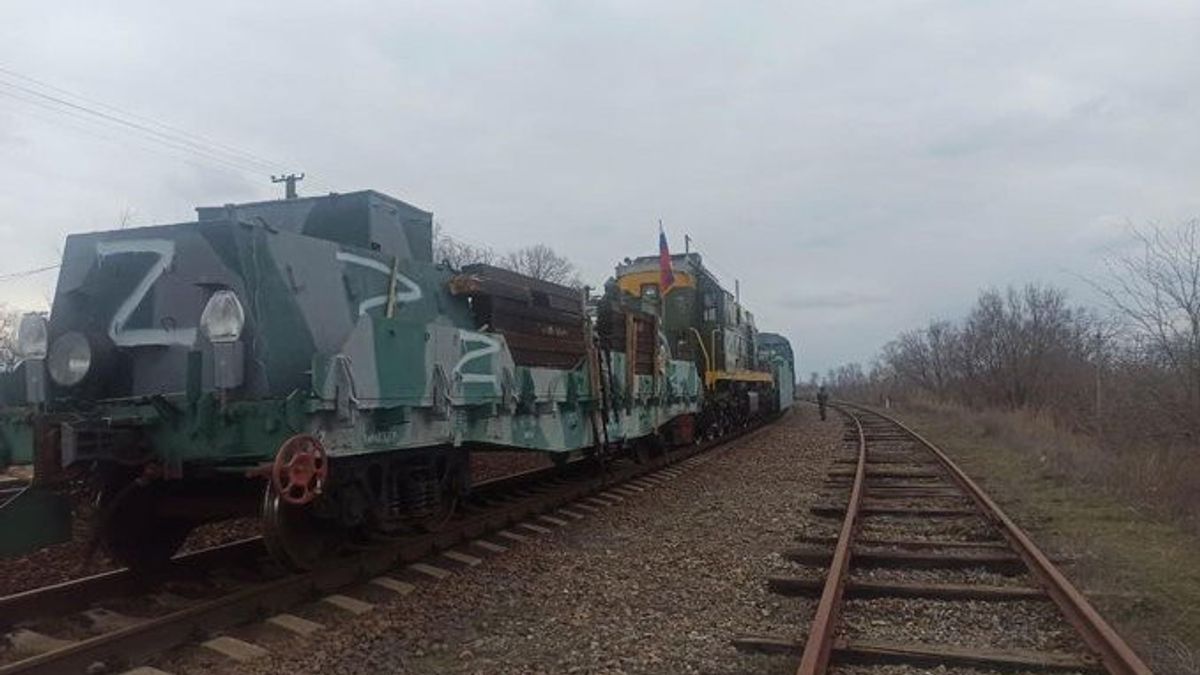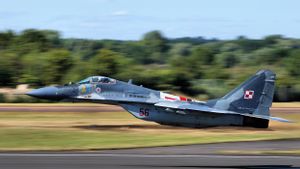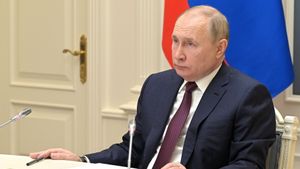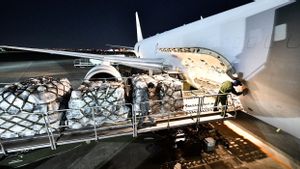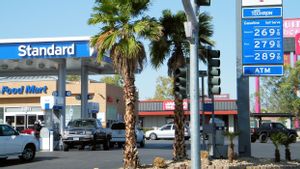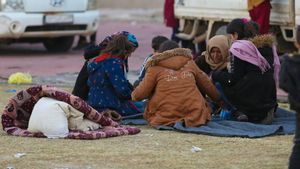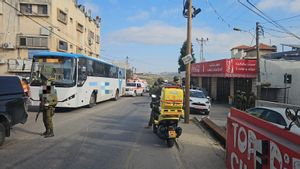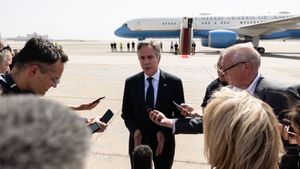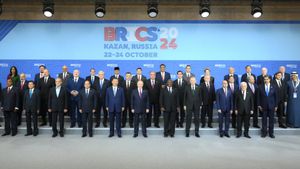JAKARTA - A Russian armored train has been spotted near the front line in the Russo-Ukrainian war. Videos uploaded to social media show the train of several carriages, including some with a distinctive armor profile, reportedly near Melitopol, marked with the white 'Z' symbol that adorns the vehicles of the Russian invasion forces.
In a statement, the Press Office of the Black Sea Fleet said armored trains of the Southern Military District of Russia evacuated citizens from several states from Ukraine via train.
"Today, soldiers of the Southern Military District escorted 248 foreign nationals, including 38 children, from the Kherson Region of Ukraine to the Armyansk City of the Republic of Crimea. The safety of the transportation of foreigners is guaranteed by the Southern Army Military District armored train crew. Now, Russia will ensure prompt delivery of all foreign nationals back to their homeland," the statement read, quoted from TASS 10 March.
According to the statement, the armored train evacuated 166 Turks, 41 Ukrainians, as well as Egyptians, Azerbaijanis, Pakistanis, Swedes, Italians, Brazilians, Moroccans, and Indians. The refugees boarded near the settlement of Antonovka in the Kherson Region. The evacuation was carried out on the application, filed at the Kherson military office.
Meanwhile, according to The National News, a Kyiv Independent reporter said the train was used in fighting near Mariupol, but there was no way to verify that.
Armored trains, rarely used today, date back to a time when trains were one of the most important methods of supplying large troops on the front line.
First used in the American Civil War, the heavily protected and armed trains came into their own during the Russian civil war and later, during the German invasion of Russia in 1941.
At that time, fighting raged along the rail lines and opposing forces fought for control of the rails, the furthest point from the rail lines and therefore, the fastest supply route.
Trucks were much more durable during this era than they are today and most armies still relied on horses for logistics — even in the Second World War.
Many countries do not have road networks in place to support the delivery of thousands of tonnes of supplies to the front lines.
Between the First World War and 1945, most of the world's major armies had at least one armored train to defend vital rail supply routes.
Over great distances in Russia after Hitler's 1941 invasion, German rail transport was vulnerable to Russian partisan attacks, while Russian rail was vulnerable from the air. Furthermore, armored trains were often equipped with artillery, machine guns, anti-tank guns, and even tank turrets.
SEE ALSO:
To note, many of the Soviet Union's armored trains were captured by the Nazis in the first year of Operation Barbarossa, Hitler's attempt to control the Soviets. However, the Soviets provided more services after Moscow recovered from Germany's initial advances. Armored trains eventually fell out of use as the Russians advanced into Germany.
By that time, the supply of US trucks and jeeps to Soviet troops had increased substantially, reaching 400,000 vehicles supplied through the Lend Lease program at the end of the Second World War. The generals had far more logistical options and were no longer focused on controlling the railways.
Since then, armored trains have been rarely used, although Russia reportedly sent one to protect rail supply routes during the 1999 war in Chechnya.
The English, Chinese, Japanese, Arabic, and French versions are automatically generated by the AI. So there may still be inaccuracies in translating, please always see Indonesian as our main language. (system supported by DigitalSiber.id)
